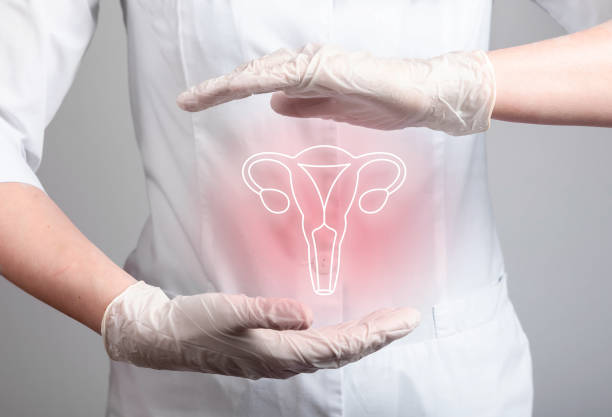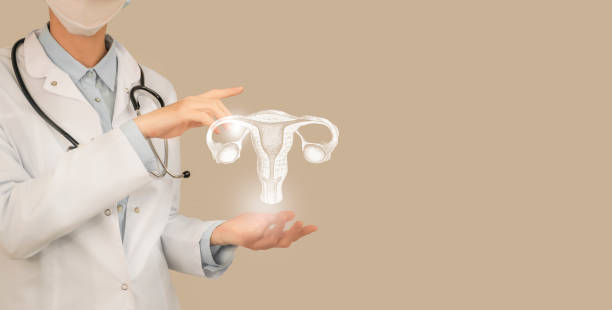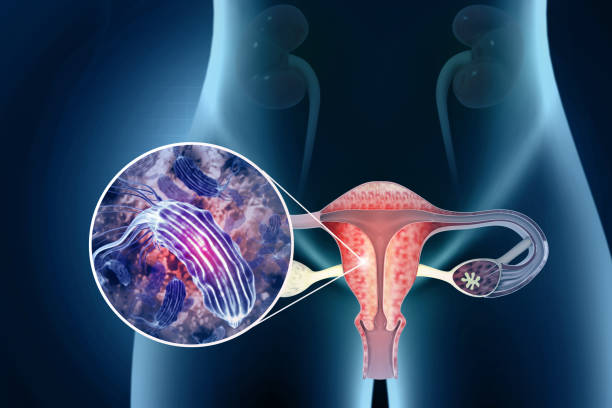Primary Ovarian Insufficiency:
Primary Ovarian Insufficiency (POI) remains a cryptic condition that significantly influences the regenerative strength of women. Previously known as untimely ovarian disappointment, POI is characterized by a suspension of ovarian capability before the age of 40, prompting an unpredictable monthly cycle, fruitlessness, and hormonally lopsided characteristics. This condition has received expanded consideration lately because of its effect on a lady’s general prosperity and the difficulties it poses to richness. We will look into the different parts of primary ovarian insufficiency, including its causes, side effects, analytic techniques, and accessible treatment choices.

Grasping Primary Ovarian Insufficiency
Primary Ovarian Insufficiency, as the name suggests, revolves around the powerlessness of the ovaries to ideally work. Normally, a lady’s ovaries produce eggs and deliver chemicals like estrogen and progesterone, essential for the feminine cycle and generally conceptive wellbeing. Nevertheless, on account of POI, this typical ovarian capability is disturbed, prompting a heap of inconveniences.
Reasons for Primary Ovarian Insufficiency
The reasons for POI are multifactorial and can fluctuate from hereditary variables to immune system issues. While the specific etiology stays slippery, generally speaking, a few normal variables related to primary ovarian insufficiency include:
Hereditary Variables:
Certain hereditary circumstances, like Turner’s condition and Delicate X disorder, are connected to an expanded risk of POI. Irregularities in the X chromosome can disturb the ovarian turn of events and capabilities.
Immune system problems:
In certain cases, the body’s safe framework erroneously assaults and harms the ovaries, prompting ovarian brokenness. This immune system reaction can bring about the untimely exhaustion of ovarian follicles.
Chemotherapy and Radiation Treatment:
Openness to specific disease therapies, especially chemotherapy and radiation treatment, can harm the ovaries and trigger primary ovarian insufficiency. The seriousness of the effect depends on the type and dose of the treatment.
Natural Variables:
Openness to natural poisons, for example, certain pesticides and synthetic compounds, has been associated with an expanded risk of ovarian brokenness. These poisons can impede typical ovarian capability and contribute to the advancement of POI.
Idiopathic Elements:
Now and again, the reason for primary ovarian insufficiency stays obscure, prompting the arrangement of idiopathic POI. This highlights the intricacy of the condition and the requirement for additional exploration.
Side effects of primary ovarian insufficiency
Perceiving the side effects of POI is essential for early determination and intercession. The signs and side effects of primary ovarian insufficiency might include:
Unpredictable Periods:
Ladies with POI frequently experience unpredictable or missing feminine periods, mirroring the disturbance in ovarian capability.

Barrenness:
One of the trademark elements of primary ovarian insufficiency is fruitlessness, as the ovaries neglect to consistently deliver feasible eggs.
Hot Blazes and Night Sweats
Hormonal lopsided characteristics coming about because of POI can prompt side effects usually connected with menopause, for example, hot blazes and night sweats.
Vaginal Dryness:
Diminished estrogen levels can cause changes in the vaginal tissues, prompting dryness and distress during intercourse.
Mind-set Swings and Crabbiness:
Hormonal vacillations can affect state-of-mind guidelines, bringing about temperament swings, peevishness, and sensations of uneasiness or melancholy.
Findings of Primary Ovarian Insufficiency
A precise finding of primary ovarian insufficiency includes a careful assessment of clinical history, clinical side effects, and research center tests. Key analytic methodologies include:
Chemical Level Testing:
Blood tests estimating chemical levels, especially follicle-invigorating chemicals (FSH), luteinizing chemicals (LH), and estrogen, can give significant bits of knowledge into ovarian capability.
Hereditary Testing:
In situations where a hereditary variable is thought to exist, hereditary testing might be used to distinguish chromosomal irregularities related to primary ovarian insufficiency.
Ovarian Save Testing:
Surveying the ovarian cavity through tests like the enemy of Müllerian chemicals (AMH) can assist with deciding the amount and nature of a lady’s leftover eggs.
Imaging Studies:
Ultrasound imaging might be utilized to picture the ovaries and survey their design and follicle count.
Bone Thickness Testing:
Given the effect of diminished estrogen on bone well-being, bone thickness testing might be prescribed to assess the risk of osteoporosis.
Treatment Choices for Primary Ovarian Insufficiency
Overseeing primary ovarian insufficiency includes tending to the fundamental causes, overseeing side effects, and taking into account ripeness conservation choices. While there is no remedy for POI, different treatment approaches intend to work on hormonal equilibrium and ease related side effects.
Chemical Substitution Treatment (HRT):
HRT, comprising estrogen and progesterone, is frequently recommended to address hormonal unevenness and reduce side effects like hot blazes, vaginal dryness, and emotional episodes.
Fruitfulness Conservation:
For ladies craving pregnancy, conceptive advances like in vitro preparation (IVF) and egg freezing might be considered to safeguard richness.
Bone Wellbeing The board:
Given the expanded risk of osteoporosis in women with POI, calcium and vitamin D supplementation, along with lifestyle changes, are fundamental for maintaining ideal bone well-being.
Mental Help:
Adapting to the profound and mental effects of primary ovarian insufficiency is basic to, generally speaking, prosperity. Guiding and upholding gatherings can be important in exploring the difficulties related to this condition.
Conclusions
Primary ovarian insufficiency presents critical difficulties to ladies’ conceptive well-being and generally personal satisfaction. Figuring out the causes, side effects, and accessible treatment choices is fundamental for convenient finding and intercession. While there is no one-size-fits-all way to deal with overseeing POI, a multidisciplinary approach including medical services experts, fruitfulness subject matter experts, and emotional well-being experts can assist with tending to the different parts of this mind-boggling condition.
All in all, primary ovarian insufficiency fills in as a sign of the complex transaction of the hereditary, immune system, and ecological variables impacting regenerative wellbeing. As exploration keeps on disclosing the secrets encompassing POI, the clinical local area endeavors to work on indicative methods and helpful mediation, offering trust and backing to ladies exploring the difficulties of this condition. By encouraging mindfulness, propelling examination, and giving far-reaching care, we move towards a future where the effect of primary ovarian insufficiency on ladies’ lives can be moderated, enabling them to lead satisfying and solid lives regardless of the difficulties presented by this condition.

FAQs
What is Primary Ovarian Insufficiency (POI)?
Primary ovarian insufficiency, otherwise called untimely ovarian disappointment, is a condition where the ovaries fail to work ideally before the age of 40. This results in sporadic periods, fruitlessness, and hormonally uneven characters.
What are the normal reasons for primary ovarian insufficiency?
The reasons for POI are different and incorporate hereditary variables (like Turner’s condition), immune system problems, openness to specific malignant growth therapies (chemotherapy and radiation treatment), ecological elements, and, at times, idiopathic variables where the specific reason is obscure.
How is primary ovarian insufficiency analyzed?
Determination includes a mix of clinical history assessment, clinical side effects evaluation, and different research center tests. Chemical level testing, hereditary testing, ovarian hold testing, imaging review, and bone thickness testing are ordinarily used to analyze POI.
What are the side effects of primary ovarian insufficiency?
Normal side effects incorporate sporadic periods, barrenness, hot blazes, night sweats, vaginal dryness, temperament swings, and touchiness. These side effects are a consequence of the hormonal unevenness brought about by the brokenness of the ovaries.
Might primary ovarian insufficiency at any point be dealt with?
While there is no solution for POI, different treatment choices expect to oversee side effects and work on hormonal equilibrium. Chemical Substitution Treatment (HRT), ripeness conservation techniques like in vitro preparation (IVF), and bone well-being are a portion of the methodologies utilized in the treatment of POI.
